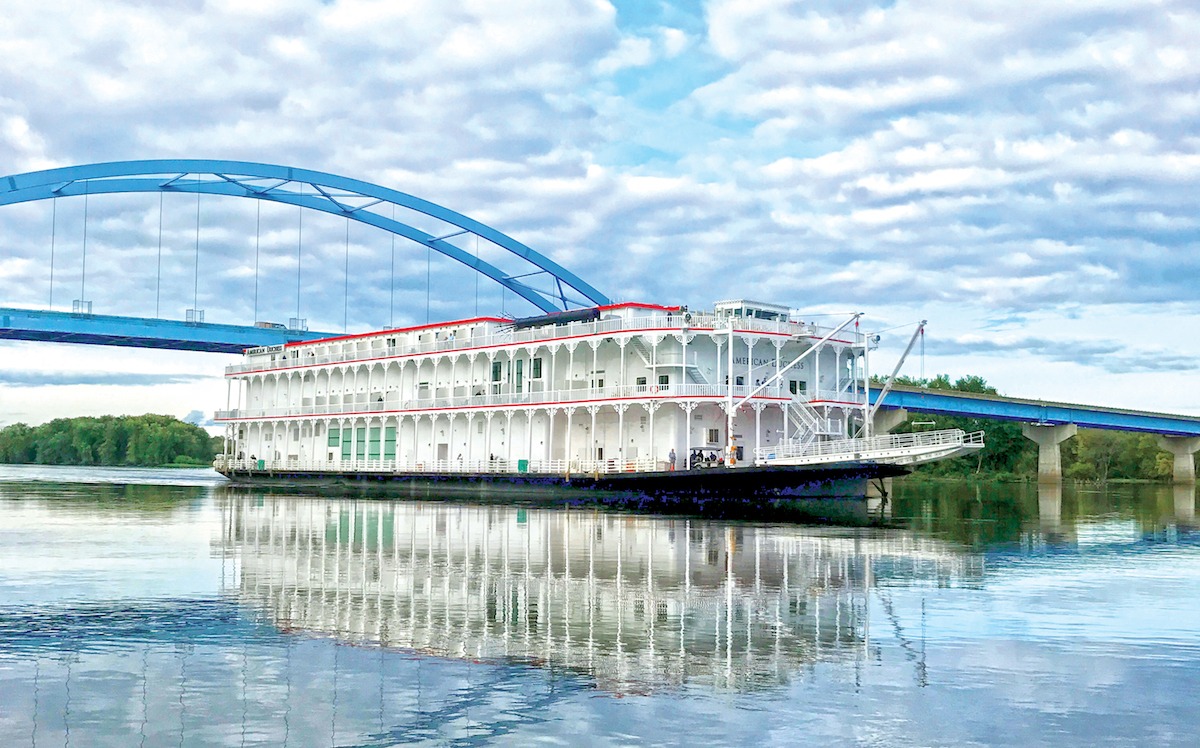
Learn What’s to Love in Bilbao and Spain’s Basque Country
It’s been said that Frank Gehry’s dazzlingly designed Guggenheim Museum is what really put Bilbao on travelers’ radar, and there is some truth to that. But bringing in that museum was part of a larger plan to turn a rough former industrial city into a handsome model of urban planning and cultural development. In 2010, Bilbao won the Lee Kuan Yew World City Prize (a sort of “Nobel prize of urbanism”) and, in 2018, became the Academy of Urbanism’s European City of the Year, beating out Vienna. Part of that development was a 5.5 million-euro upgrade to the cruise terminal that included an expanded cruise berth and a welcoming maritime station.
Bilbao’s port is in the town of Getxo, where the winding Estuary of Bilbao meets the Bay of Biscay on Spain’s northeast coast. So cruisers are just 9.5 miles from both Bilbao Airport and the city center, and an efficient highway system makes the rest of Basque Country easily reachable on shore excursions. Rioja winery tours? San Sebastian by the sea? Even Pamplona to see the running of the bulls? You’ve come to the right port.
Basque Country
The Basque have a strong cultural identity, distinct culinary traditions, and a language quite different from Spanish (though pretty much everyone does speak Spanish). Their roots in Europe go back at least as far as the Neolithic Period, and the culture has endured everything from Roman occupation to the oppressive 36-year rule of dictator Francisco Franco. Today, even though the lands lie within the borders of Spain, this is Euskadi: the Basque Country, an Autonomous Community. And your gateway to it is Bilbao, its largest city.
Bilbao Design Destination
Bilbao is surrounded by low mountains and rich forests. Its temperate summer weather, pedestrian areas, and promenades make the city center ideal for walking tours. Fine architecture abounds, from the stately banks and stylish shops along the Gran Via in the commercial district Ensanche to the historical landmarks in Casco Viejo — often referred to as the Seven Streets — the old city. Once encircled with walls, this pedestrian-friendly zone is home to the 14th-century Gothic Cathedral of Santiago, the Teatro Arriaga opera house, and the 1510 Church of Saint Anthony the Great.
RELATED: 6 Must-Sees In Cadiz, Spain
Accuse it of showboating, but it’s a gem: The Bilbao Guggenheim Museum is itself a captivating work of art, completed in 1997 on the redeveloped industrial wharf along the estuary and beckoning passersby with its curving panels of titanium. The wonder of architect Frank Gehry’s design continues inside, leaving about half of the space for exhibits, which tend toward modern works.
Follow the promenade upstream to see Santiago Calatrava’s pedestrian bridge, Zubizuri (Basque for “white bridge”). This span across the estuary connects, by another footway, to the steps of Japanese architect Arata Isozaki’s housing development known as Isozaki Gate. Pass between the two tall towers of that project and you enter the Ensanche district, the elegant 19th-century “expansion” of the old city.
Not to be overlooked, the Bilbao Fine Arts Museum, at the edge of the city’s Doña Casilda Iturrizar Park, has a broader collection arranged like a children’s ABC book. Each gallery has a unifying theme word — F is for Friendship, H is for Heriotza (‘death’ in Basque) — and the art works are grouped accordingly, no matter the artist, medium, or style, from Romanesque to avant-garde.
RELATED: A Taste of Spain on Windstar
Before you even leave the Getxo port area, visit Vizkaya Bridge, also known as the “Hanging Bridge,” listed by UNESCO as a bit of World Heritage. A gondola suspended by cables from the high steel expanse crosses the estuary at street level, leaving the channel open for boat traffic. This was the world’s first transporter bridge and one of fewer than a dozen still being used. There’s an elevator to the top for great views. The bridge was designed by Alberto Palacio, a Basque-born architect and disciple of Gustave Eiffel.
Culinary Exploration
Bilbao is a city for eating. In Basque Country, the equivalent of tapas are pintxos (the Basque ‘tx’ is pronounced like an English ‘ch’ as in church), and bars in all directions serve these slightly larger — and arguably more delicious — versions of tapas. One particularly common morsel is the gilda: an olive, anchovy, and pickled pepper on a toothpick. Guided walking food tours are common but service is friendly if….
This is only an excerpt. To read the full article, subscribe to Porthole Cruise Magazine.
By Kevin Revolinski
Photo: Stefano Politi Markovina / Alamy Stock Photo









